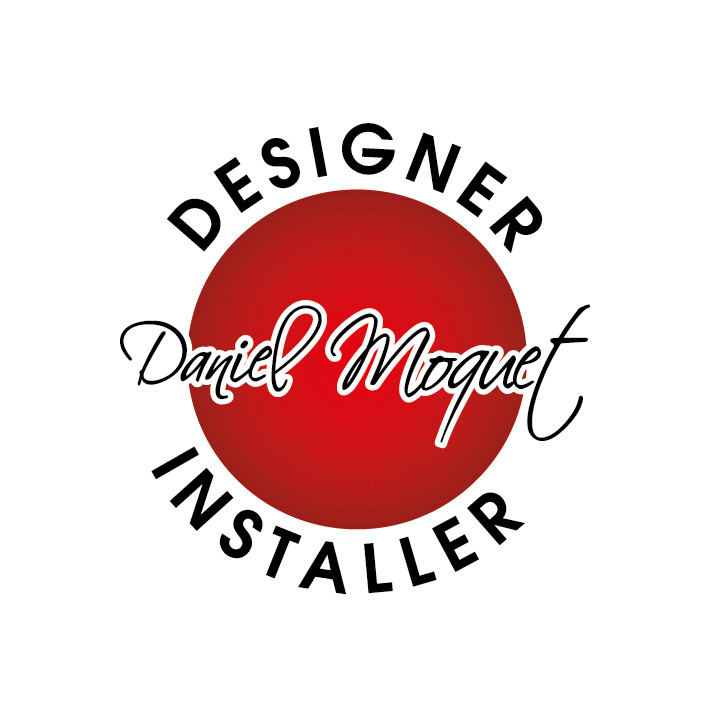Telephone: 0118 229 2486
Home›News›Fencing: More Than a Boundary ? Creative Uses in Modern Landscaping
Fencing: More Than a Boundary ? Creative Uses in Modern Landscaping
Exploring innovative uses of fencing beyond mere boundary markers, highlighting creative design ideas that can redefine outdoor spaces.
Rethinking Fences: Beyond Boundaries in Modern Landscaping
In the realm of modern landscaping, fencing is undergoing a remarkable transformation. No longer just a means to mark boundaries, fences are now pivotal elements in garden design, contributing both form and function. "Fencing: More Than a Boundary – Creative Uses in Modern Landscaping" explores how this traditional feature is being reimagined in contemporary outdoor spaces.
Fencing has evolved from its utilitarian roots to become a canvas for creativity and expression. Today, it plays a crucial role in defining the aesthetic and atmosphere of a garden, blending seamlessly with the landscape's overall theme. From providing privacy and security to serving as a backdrop for artistic expression, the potential of fencing in modern landscaping is vast and varied.
Join us as we delve into the innovative ways fencing is being used in today's gardens. We'll uncover how modern homeowners and landscape designers are pushing the boundaries of what fencing can be, transforming it into a statement piece that elevates the entire outdoor space.
The Evolution of Fencing in Landscaping
Fencing has come a long way from its origins as a simple boundary marker. Its evolution reflects broader trends in garden and landscape design, where functionality meets aesthetic innovation.
1. Historical Functionality
Traditionally, fences served primarily to demarcate property lines, keep out unwanted visitors, and contain livestock or pets.
In suburban and urban settings, fences provide privacy and security, a function that continues to be essential.
2. Aesthetic Transformation
Over time, the role of fencing in landscaping has expanded to include aesthetic considerations.
Modern fencing is an integral part of garden design, contributing to the overall visual appeal and theme of outdoor spaces.
3. Material and Design Innovation
The variety of materials available for fencing has grown, including wood, metal, composite, and even living plants, allowing for greater creative expression.
Design styles have evolved too, ranging from minimalist and contemporary to ornate and traditional, reflecting the diversity of modern landscaping trends.
4. Fencing as a Design Feature
Fences are now used as backdrops for garden art, supports for climbing plants, and elements that add texture and colour to the garden.
They often serve as focal points, drawing the eye and contributing to the narrative of the outdoor space.
5. Integration with Landscape Elements
In modern landscaping, fencing is thoughtfully integrated with other elements like lighting, water features, and planting schemes, enhancing the cohesion and flow of the garden.
The evolution of fencing from a purely functional element to an integral part of modern landscape design illustrates its growing importance in creating dynamic and visually appealing outdoor spaces.
Creative Fencing Ideas
The world of modern landscaping brims with creative fencing ideas that extend far beyond traditional boundaries. Here, we delve into how innovative fencing designs are redefining outdoor spaces.
1. Personal Expression
Fences are now canvases for creativity. Vibrant murals, intricate latticework, and bespoke metal art transform fences into striking pieces of garden art.
Homeowners are personalising fences with unique patterns, colours, and materials, making them a reflection of their artistic taste.
2. Living Fences
Living fences, composed of hedges or climbing plants, merge the beauty of nature with the functionality of a fence, creating a lush, green boundary that evolves with the seasons.
They not only add to the garden’s biodiversity but also enhance privacy and sound insulation.
3. Multi-Functional Designs
Contemporary fencing goes beyond separation to serve multiple purposes. Built-in seating, vertical gardens, and integrated lighting are just a few examples.
Such multifunctional designs maximise space, especially in smaller gardens, adding utility and charm.
4. Incorporating Architectural Elements
Fences are being designed to complement the architectural style of homes, from sleek, minimalist designs for modern houses to ornate, wrought iron for classical homes.
This harmony between the home and garden creates a cohesive and well-thought-out aesthetic.
Combining Functionality with Aesthetics
In modern landscaping, fencing is not just a boundary; it's a critical design element that balances functionality with aesthetics. This section explores how contemporary fences meet practical requirements while adding visual appeal to outdoor spaces.
1. Fencing Privacy and Security
While privacy and security remain primary functions, modern fences achieve these objectives without sacrificing style. Designs offer seclusion and safeguarding with an artistic touch.
Frosted glass panels, closely spaced wooden slats, or ornamental metalwork provide security while maintaining an aesthetic appeal.
2. Durable and Low-Maintenance Materials
The choice of material plays a pivotal role in the functionality of a fence. Contemporary options like composite materials offer durability and require minimal maintenance.
These materials resist weathering, pests, and rot, ensuring the fence's longevity while maintaining its appearance.
3. Enhancing Garden Aesthetics
Modern fencing complements the garden's overall design theme. Whether it's a minimalist approach or a more traditional style, the fence contributes to the garden's visual narrative.
Strategic colour choices and textures can make fences a standout feature or allow them to blend seamlessly into the background.
4. Adapting to Landscape Features
Contemporary fencing designs are adaptable to various landscape features, such as slopes, water bodies, and garden paths, enhancing the garden's spatial dynamics.
This adaptability allows fences to become integral parts of the landscape, contributing to the garden's overall harmony and flow.
5. Eco-Friendly and Sustainable Options
Sustainability is a key consideration in modern fencing. Eco-friendly materials, such as bamboo or recycled wood, are popular choices for environmentally conscious homeowners.
These materials offer both aesthetic appeal and a reduced ecological footprint.
Balancing functionality with aesthetics, modern fencing stands as a testament to the evolving nature of garden design, where practical needs are met with stylish solutions.
Fencing Material Options in the UK
When selecting fencing for a garden, the choice of material is crucial. Each option offers its own set of advantages and drawbacks. Here's an overview of popular fencing materials in the UK and their respective pros and cons.
1. Wood
Pros: Wooden fences provide a classic look, are versatile for various designs, and can be painted or stained to match any style. They offer a natural aesthetic that blends well with garden environments.
Cons: Wood requires regular maintenance to prevent rot, warping, and pest infestation. Lifespan varies based on wood type and maintenance.
2. Metal
Pros: Metal fencing, particularly wrought iron and steel, is durable and offers a high level of security. It's also available in various designs, from sleek modern lines to intricate traditional patterns.
Cons: Metal can be prone to rust without proper treatment and is generally more expensive than other materials.
3. Composite
Pros: Composite fencing, made from a mixture of wood and plastic, offers the look of wood but with increased durability. It's low maintenance, resistant to rot and pests, and often made from recycled materials.
Cons: Composite fencing can be more costly upfront than traditional wood and may have limited design and colour options.
4. Vinyl
Pros: Vinyl fencing is very low maintenance, resistant to weather, rot, and pests, and doesn’t need painting or staining. It comes in various styles and is easy to clean.
Cons: It may have a less natural look compared to wood and can be more expensive. In extreme temperatures, vinyl can become brittle.
5. Bamboo
Pros: Bamboo fencing is eco-friendly, offering a unique, natural look. It's strong, durable, and a great option for a sustainable garden.
Cons: Bamboo can require regular maintenance to prevent weathering and may not be as readily available as other materials.
Each material offers unique benefits and challenges, and the choice ultimately depends on personal preferences, garden style, and practical considerations like climate and maintenance willingness.
Fencing in the realm of modern landscaping has transcended its traditional role as a mere boundary marker. We hope you’ve enjoyed exploring fencing options with Daniel Moquet.
From artistic expressions on fence panels to the eco-friendly charm of bamboo, fencing now plays a pivotal role in landscape design. It's not just about defining property lines; it's about creating a narrative, enhancing privacy, ensuring security, and most importantly, elevating the overall beauty of our gardens.
The diverse range of materials available in the UK – each with its unique set of pros and cons – offers homeowners the freedom to choose what best suits their garden's theme, maintenance preferences, and ecological values. Whether it's the timeless appeal of wood, the durability of metal, or the sustainability of composite and bamboo, the choices are as varied as the designs they inspire. As always, if you would like any assistance in looking at your options, a Daniel Moquet professional will be available to help.
Modern fencing is a testament to the evolving nature of landscape architecture. It's an element that, when thoughtfully integrated, has the power to transform an ordinary outdoor space into a spectacular garden sanctuary. As we continue to push the boundaries of garden design, fencing will undoubtedly remain an essential, ever-adaptive feature in our quest for beautiful, functional, and sustainable outdoor living spaces.









 Over 40 years of experience working collectively
Over 40 years of experience working collectively A 'Quality Service Guarantee'
A 'Quality Service Guarantee' Premium industry-leading products
Premium industry-leading products